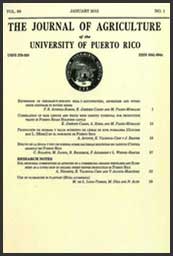Abstract
The experiment consisted of two dates of planting [in September (D1) and February (D2)] of maize (Zea mays L.) DKC 67-60, to evaluate the effect of four N fertilization levels (0, 56, 112 and 185 kg/ha) and three ages at harvest [70, 77 and 84 days after planting (DAP)] on dry matter yield (DMY) of the leaves, stem, ear and of the entire plant; and as indicators of nutritive value [crude protein (CP) and neutral detergent fiber (NDF)] of harvested material prior to ensiling. In both plantings, the levels of N affected (P<0.05) DMY of leaves, stems, ears and entire plant, exhibiting both a linear and a quadratic response, and suggesting that the optimum N application rate is between 112 and 185 kg/ha. Age at harvest date affected (P<0.05) DMY of stems, ears and entire plant, but not that of the leaves. Greater DMY was observed at 84 DAP for all components. The CP concentration was greater in the forage of the first planting (D1). Increasing N application rates increased CP, but had no effect on NDF concentration. Age at harvest had no effect on CP, but progressively increased NDF. Both pH and organic acid concentrations in the silages were similar with the four N levels; all of the silages showed good fermentation characteristics.

